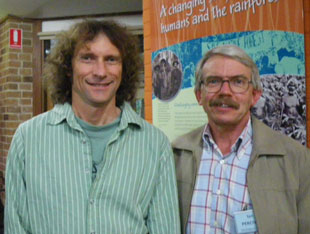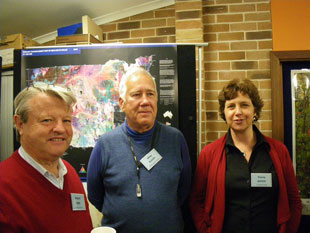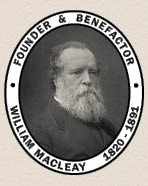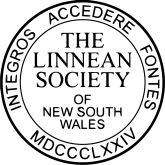
David Keith Linnean Society of NSW (left) and DECCW and Ian Percival, GSNSW, two of the organisers of the symposium.
A symposium on Geodiversity, Geological Heritage and Geotourism, held at Sea Acres National Park, Port Macquarie, 6-10th September, 2010, engaged public interest and encouraged interdepartmental co-operation.
The symposium organised by the Linnean Society of NSW brought state and federal government officers together with private tourist interests, teachers, university academics and Australian Museum researchers to discuss themes of geodiversity, geological heritage and geotourism. The Geological Survey of NSW (GSNSW) and the Department of Environment, Climate Change and Water NSW (DECCW) co sponsored the event and provided many of the speakers.
The scope of the symposium was extremely diverse and ranged from experiences of small geotourist operators to the strategies of government policy makers. DECCW speakers outlined a project to assess geodiversity sites in NSW and their representation within the reserve system. They further described a plan to conserve geoheritage through the Great Eastern Ranges Initiative. The federal Department of Environment, Water, Heritage and the Arts weighed in with an outline of the criteria and processes necessary for a site to be added to the National Heritage List and the development of an Australian fossil heritage catalogue.
In fact, fossil site preservation was a special topic due to the popularity of fossil sites and their vulnerability to overcollecting as highlighted in talks on the scientifically significant Lake Burrinjuck Devonian fossil sites and the Canowindra fossil fish mass-kill site.
In an impassioned presentation, Armstrong Osborne (Sydney University) demonstrated that geology was not an attribute covered by the various pieces of conservation legislation and that important geological sites were mostly conserved because of the flora or fauna associated with them. He used as an example, the Three Sisters in the The Greater Blue Mountains Area World Heritage Site, which is preserved not for the remarkable sandstone outcrops but for the eucalypt trees that grow on the sandstone. Both he and Angus Robinson (Leisure Solutions) concluded that there was a need to create a constituency of advocates for the conservation and management of sites on the basis of their geology.

Robert King, Linnean Society of NSW with Mike Augee, Wellington Caves Fossil Studies Centre and Penny Wood, teacher, Crowdy Head.
Several technical talks dealt with mechanisms and tools that could be used to gauge geodiversity such as geophysics, soil landscape mapping, vegetation relationships, and remote sensing imagery. Other aspects covered were the development of a tool kit to assess geoheritage values, and the establishment of the Tasmanian Geoconservation Database presented by Michael Comfort (Department of Primary Industries, Hobart).
Cameron Ricketts (GSNSW) said the symposium provided both GSNSW and DECCW an opportunity to cooperate on matters of information exchange. Stephen Meehan (Manager, Karst and Geodiversity Unit, DECCW) took on notice a discussion for the need for more geological expertise within DECCW.


